Can Back Pain Be Helped by Ayurveda? Natural Remedies for Prolonged Pain
Introduction
Back pain isn’t just a little ache you shrug off—it’s one of those problems that can creep into every corner of your life. It can keep you from sitting comfortably at your desk, playing with your kids, sleeping well, or even enjoying a simple walk. For many people, the pain starts subtly—maybe after a long day at work or a weekend spent lifting boxes—but over time it can become persistent, affecting mood, energy, and overall health.
Modern medicine often jumps to painkillers, muscle relaxers, or even surgery. While these can offer quick relief, they don’t always address the deeper cause. That’s where Ayurveda shines. This ancient healing system takes a holistic view of the body, mind, and spirit, aiming to restore balance rather than just mute symptoms. It looks beyond “where it hurts” to figure out “why it hurts.”
At GS Ayurveda Medical College and Hospital , the focus is on long-term healing, that’s why, it is recognised as the Top 10 Ayurvedic Hospital in Uttar Pradesh . By combining centuries-old wisdom with modern facilities, they help patients get to the root of their back pain and prevent it from returning. The approach isn’t about a one-size-fits-all cure; it’s about understanding your unique body type, lifestyle, and environment.
So, can back pain be helped by Ayurveda? The short answer—absolutely. The longer answer—yes, but it’s a journey that blends detoxification, herbal remedies, gentle therapies, and lifestyle changes. And in the process, you might just find you’re not only getting rid of back pain but also feeling more energetic, balanced, and in tune with your body than you have in years.
Why Back Pain Is So Common Today
In today’s fast-paced, tech-heavy world, back pain has quietly become one of the most common health complaints. We’re sitting more than ever before—whether at office desks, in cars, or on couches scrolling through our phones. Hours of sitting weaken the core muscles that support the spine, making it more vulnerable to strain. Add in poor posture—slouching over keyboards, leaning into screens—and you’ve got a recipe for chronic discomfort.
Stress is another culprit. Stress releases the hormones causing stiffness in muscles and over time, this constant tension can lead to knots, and pain that’s hard to shake off. And let’s not forget about physical strain—lifting heavy items incorrectly, sleeping on unsupportive mattresses, or sudden twisting movements can all trigger or worsen back pain.
Modern lifestyles also lack movement variety. Instead of walking, bending, and stretching throughout the day, most people repeat the same limited motions, which can lead to muscular imbalances. Even regular gym-goers sometimes skip the core-strengthening exercises that are essential for spinal support.
On top of that, weight gain from sedentary habits adds more pressure on the spine and joints, amplifying discomfort. And injuries—whether from sports, accidents, or everyday mishaps—often set the stage for recurring pain.
In short, back pain is so common today because our bodies aren’t getting the balanced movement, posture, and care they need. That’s why prevention and long-term management—rather than just quick fixes—are more important than ever.
Ayurveda’s Perspective on Back Pain
Ayurveda sees back pain through a very different lens than conventional medicine. Instead of focusing only on muscles, discs, or nerves, it looks at the root imbalance in the body’s three doshas—Vata, Pitta, and Kapha. Each dosha represents a unique energy type, and when one is out of balance, health issues arise.
For back pain, Vata imbalance is the most common culprit. Vata governs movement in the body, and when it’s disturbed—often by irregular routines, poor diet, or excessive stress—it can cause dryness in the joints, stiffness, and nerve irritation. Pitta imbalance might lead to inflammation, burning sensations, or swelling in the back area, while Kapha imbalance often causes heaviness, fluid retention, or sluggish circulation in the spine.
Ayurveda doesn’t just label the type of pain; it works to understand your unique constitution (Prakriti) and current imbalance (Vikriti). This guides the choice of treatments, which can include detoxifying therapies like Panchakarma, nourishing herbal oils for massage, anti-inflammatory herbs, and tailored dietary changes.
An important aspect of the Leading Private Ayurvedic Hospital in Uttar Pradesh is their Ayurvedic approach that treats the whole person—not just the symptom. That means your digestion, mental well-being, sleep patterns, and even emotional state are considered in your healing plan. This holistic view ensures that relief isn’t temporary. Instead, the goal is to realign your body’s energies so the back pain doesn’t keep coming back.
In short, Ayurveda treats back pain as a symptom of a deeper imbalance—and aims to correct that imbalance for long-lasting relief.
Can Back Pain Be Helped by Ayurveda? Here’s the Ayurvedic Game Plan
Ayurveda’s approach is all about hitting pain where it hurts – literally – but in the gentlest, most natural way possible. At GS Ayurveda Medical College and Hospital, the treatment plan for back pain typically blends several elements:
1. Panchakarma Detox
Panchakarma is the ultimate choice when it comes to detoxification in Ayurveda. It removes toxins (or ama) that accumulate in the body and contribute to stiffness and pain. For back pain, treatments like:
- Kati Basti – Warm herbal oil is pooled on the lower back for deep nourishment.
- Abhyanga – Full-body therapeutic oil massage to improve circulation and reduce stiffness.
- Basti (medicated enema) – Cleanses and balances Vata, often the main culprit behind chronic pain.
2. Herbal Remedies
Ayurvedic herbs are more than just plants – they’re targeted medicine for balancing doshas.
3. Diet Adjustments
Food is medicine in Ayurveda. Depending on your dosha imbalance, you might be encouraged to:
- Eat warm, freshly cooked meals.
- Avoid cold and processed foods.
- Add anti-inflammatory spices like turmeric and ginger.
- Stay hydrated with herbal teas.
4. Yoga and Gentle Exercise
Certain yoga poses are ideal for easing back tension and strengthening muscles. At GS Ayurveda Hospital, trained instructors guide patients through safe, effective stretches. Because of this approach, GS Ayurveda is considered as a top choice among the Private Hospital in Ghaziabad UP . Examples of stretches include:
- Marjariasana (Cat-Cow Pose) – Relieves stiffness and improves posture.
- Setu Bandhasana (Bridge Pose) – Strengthens lower back and glutes.
Why Choose GS Ayurveda Medical College and Hospital for Back Pain?
When it comes to Ayurveda, not all care centers are created equal. At GS Ayurveda Medical College and Hospital, back pain treatment is taken to a whole new level by blending time-tested traditional therapies with modern diagnostic tools and infrastructure.
First, you’re in the hands of highly qualified Ayurvedic physicians, trained under NCISM guidelines and backed by the Ministry of AYUSH. They’re not just healers—they’re educators who take the time to explain your condition, the reasons behind it, and the steps to recovery.
The hospital’s facilities go far beyond basic herbal remedies. They offer OPD and IPD services, Panchakarma therapy rooms, and access to modern diagnostic services like USG, X-ray, lab investigations, physiotherapy, and ECG. This means you’re getting the best of both worlds—ancient wisdom guided by modern precision.
Treatment plans at GS Ayurveda Hospital are highly personalized. Two patients with the same type of back pain might receive completely different approaches depending on their dosha imbalance, lifestyle, and overall health. The therapies might include oil-based treatments like Kati Basti, anti-inflammatory herbal formulas, yoga therapy, and dietary guidance tailored to your constitution.
What sets them apart is their holistic focus. They understand that healing doesn’t stop when your pain fades. By helping you adopt healthier habits, strengthen your spine, and improve your mental resilience, they ensure your recovery is sustainable.
In short, choosing GS Ayurveda Medical College and Hospital means you’re not just getting treatment—you’re joining a comprehensive healing journey designed for lasting wellness.
Patient Journey: What to Expect
If you’re considering Ayurveda for back pain but aren’t sure what to expect, the patient journey at GS Ayurveda Medical College and Hospital is both thorough and reassuring. It all starts with a detailed consultation, where your Ayurvedic physician takes time to listen to your story—how long you’ve had the pain, what triggers it, your daily habits, and even your digestion and sleep patterns. This is the common questions asked in all the Top Ayurvedic Hospital in Meerut UP.
Next comes diagnosis, which may include traditional methods like Nadi Pariksha (pulse reading) along with modern tools like X-rays or lab tests to rule out serious underlying issues. Your treatment plan is then personalized.
Last is the follow-up which is a big part of the process. Regular check-ins allow doctors to monitor your progress, make adjustments, and guide you through lifestyle changes to keep pain from returning.
Patients often notice improvements not just in their back pain but also in energy levels, sleep quality, digestion, and overall mood. That’s because Ayurveda works on the whole body, creating a ripple effect of wellness.
By the time you complete your treatment plan, you’ll likely feel stronger, more flexible, and more in control of your health—ready to return to the activities you love without the constant shadow of back pain.
Natural Home Remedies for Back Pain Inspired by Ayurveda
Ayurveda offers a treasure chest of simple, natural remedies you can try at home to ease mild back pain or maintain results after professional treatment. Gently massaging your back with slightly heated sesame or coconut oil can nourish muscles, improve circulation, and reduce stiffness.
Another easy remedy is herbal compress therapy. Heat a pouch filled with Ayurvedic herbs like nirgundi leaves, fenugreek seeds, or ajwain (carom seeds), and apply it to the sore area for 15–20 minutes. This helps relieve muscle tension and stimulates healing.
A bedtime cup of turmeric milk with a pinch of black pepper is a simple anti-inflammatory tonic. Turmeric contains curcumin, which helps reduce swelling and promote joint health.
Stretch breaks are another essential habit. Every hour, stand up and gently stretch your back, shoulders, and legs to prevent stiffness. Basic yoga postures like Cat-Cow, Child’s Pose, or Cobra Pose can also be done at home to maintain flexibility.
Lastly, don’t underestimate the power of proper hydration and balanced diet. Sipping warm herbal teas like ginger or cinnamon can keep circulation flowing and Vata in check.
These remedies aren’t meant to replace professional care for severe or chronic pain, but they can be a valuable part of your daily routine for keeping your back healthy and pain-free.
Lifestyle Tips to Prevent Recurrence
Getting rid of back pain is only half the battle—keeping it from coming back is where lifestyle plays a huge role. Ayurveda emphasizes dinacharya (daily routine) for maintaining balance. Going to bed and waking up at the same time every day supports the body’s natural rhythms, which in turn reduces Vata disturbances that often cause pain.
Exercise is vital, but it doesn’t have to mean heavy workouts. Gentle yoga, swimming, or walking can keep muscles strong and flexible without straining the back.
Posture awareness is another game-changer. Whether you’re working at a desk or standing in line, keep your spine straight and shoulders relaxed. Using ergonomic furniture, adjusting your chair height, and taking frequent breaks can make a big difference.
Seasonal adjustments also help—Vata tends to get aggravated in cold, dry weather, so keeping your back warm with a shawl or heating pad can prevent stiffness. Avoid sitting or lying on cold surfaces for long periods.
Mindful eating is equally important. Eat freshly cooked warm food with anti-inflammatory spices like turmeric, cumin, and ginger. Stay hydrated, but opt for warm or room-temperature water instead of ice-cold drinks, which can disrupt digestion and aggravate Vata.
By making these small but consistent changes, you can create an environment in your body where back pain struggles to return, ensuring your hard-earned relief lasts for the long term.
Final Thoughts
So, can back pain be helped by Ayurveda? The evidence—both ancient and modern—suggests a confident “yes.” Ayurveda doesn’t stop at relieving symptoms; it digs deeper to address the root causes, whether they’re physical imbalances, lifestyle habits, or even mental stress.
At GS Ayurveda Medical College and Hospital , patients benefit from a rare blend of traditional Ayurvedic wisdom and modern diagnostic capabilities. From personalized Panchakarma treatments and herbal remedies to diet plans, yoga sessions, and lifestyle coaching, every step is tailored to promote lasting healing.
The journey isn’t just about banishing pain—it’s about reclaiming freedom of movement, boosting energy, and restoring harmony in body and mind. Patients often leave not only with healthier backs but also with tools and habits that improve their overall quality of life.
If you’ve been living with back pain—whether it’s a nagging ache or a long-term struggle—it’s worth exploring what Ayurveda can offer. With its gentle yet powerful methods, it’s not just about getting back to normal; it’s about feeling better than you have in years.
At GS Ayurveda Hospital, your back isn’t just treated—it’s understood, nurtured, and strengthened for the future. And that’s a kind of healing that truly lasts. All these factors considered together makes GS Ayurveda in the Top 10 Ayurvedic Hospital in Uttar Pradesh .
FAQs
Q1: How long does Ayurvedic treatment take to relieve the pain?
It depends on the severity and cause. Mild cases might improve in 2–4 weeks, while chronic issues could need 2–3 months.
Q2: Is Ayurvedic treatment safe for everyone?
Generally, yes. But always consult an Ayurvedic physician, especially if you’re pregnant or have other health conditions.
Q3: Can I combine Ayurveda with modern medicine for back pain?
Absolutely – many patients use Ayurveda alongside physiotherapy or medication for a holistic approach.
Q4: Will I need to change my diet completely?
Not necessarily. Small tweaks, like avoiding processed foods and adding anti-inflammatory spices, can make a big difference.
Q5: Does GS Ayurveda Hospital treat only back pain?
No, they offer Ayurvedic care for a wide range of conditions, from arthritis to digestive disorders.

